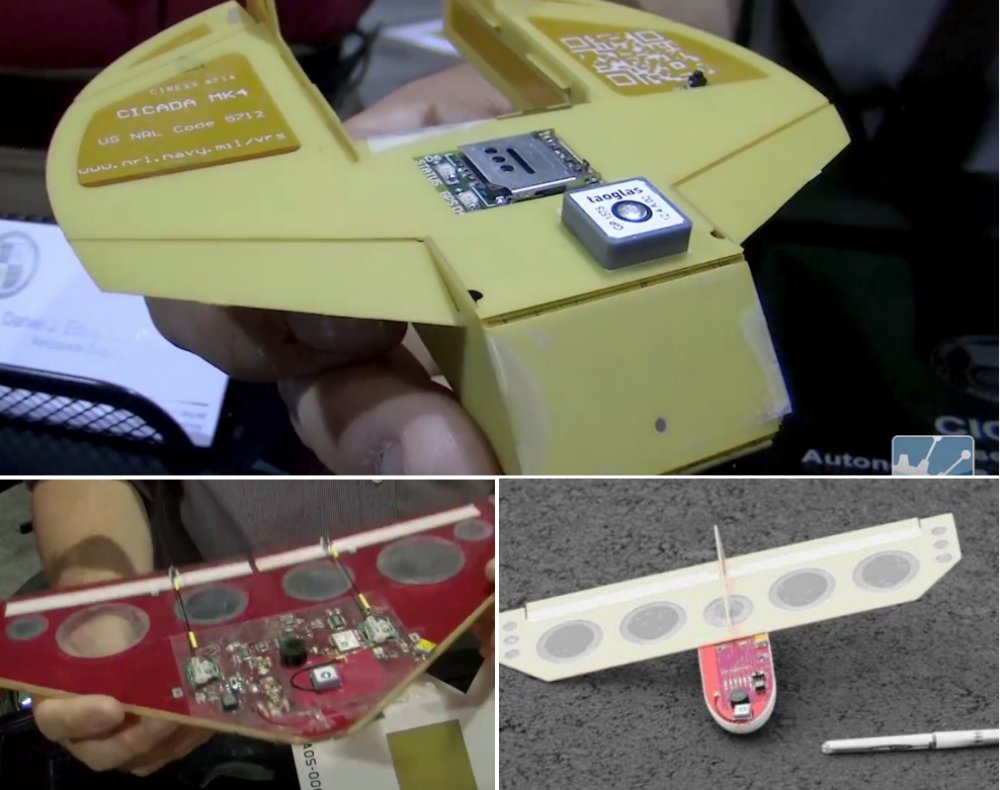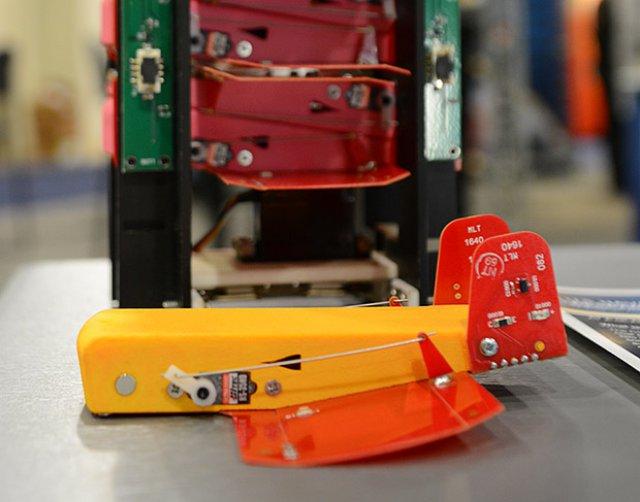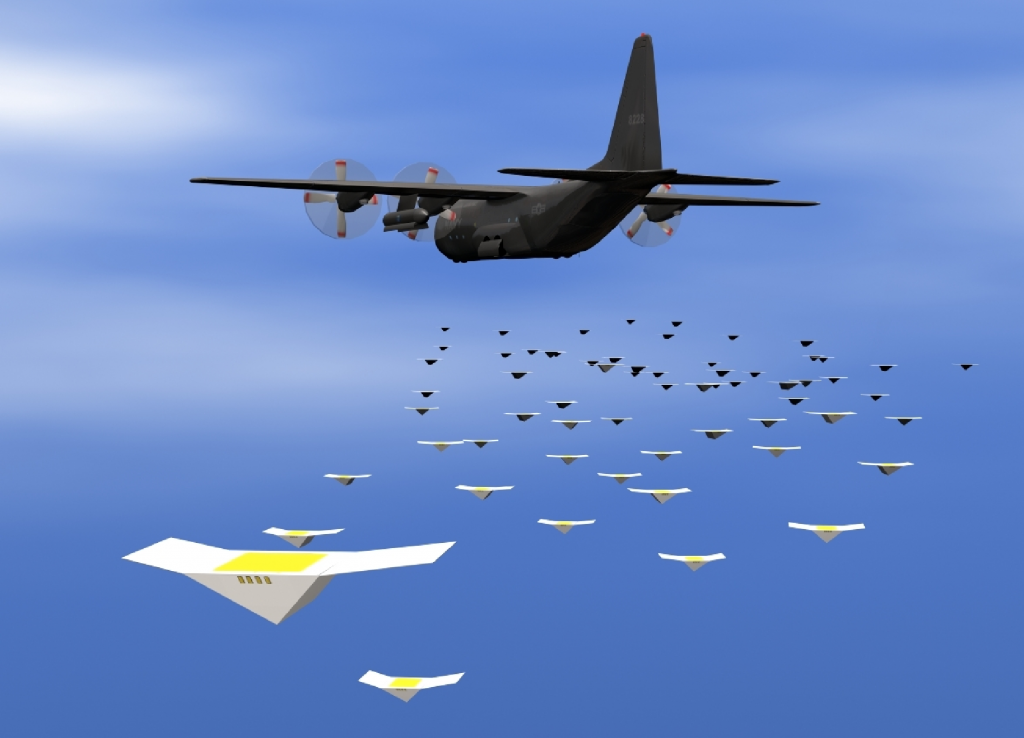The U.S. Naval Research Lab has been working on its CICADA (Close-In Covert Autonomous Disposable Aircraft) drones since at least 2011. The tiny drones are designed to be carried aloft by other aircraft and dropped, whereupon they’ll use GPS and little fins to glide to within 15 feet of their destination.
They can carry a small sensor payload, and they’re designed to be cheap enough that you can use a whole bunch of them all at once. At the Sea Air Space Expo back in April, we checked out the latest MK5 CICADA prototypes, along with a new delivery system that’ll launch 32 of them out of a standardized sonobuoy tube all at once.
The CICADA drones themselves consist mostly of a printed circuit board, which makes up the wings and also contains a custom autopilot system that can recover from the crazy tumbling that you can see when the CICADAs are initially deployed. A 3D-printed fuselage minimizes the amount of hands-on assembly time required, and the general idea is that eventually, these things will be created and assembled entirely by robots. This will drive the cost down while enabling volume production, exactly what you need if your goal is massive swarms of little robots.

The NRL has been through a bunch iterations on these things, and this particular version has been optimized for stackability and tube-ification with pleasingly rounded wings, although there’s a tradeoff there with a reduction in the glide ratio. A big focus of CICADA has been lowering costs: These little guys cost about US $250 each, which is ridiculously cheap for a piece of military hardware. And that bug-sized price tag is what allows CICADAs to be considered disposable.

Previous version of the CICADA drone. Top: MK4, bottom left: MK1 and bottom right: a design prototype. MK1 and Mk4 from engineeringtv on YouTube, bottom right via Mistral Solutions
While it’s possible to push CICADAs out one or two at a time, the current use case is that all of them get launched at once, and then each will actively navigate toward its own set of GPS coordinates. On landing, they transmit data from embedded sensors (a meteorological payload at the moment) back up to their launch aircraft through an antenna embedded in their wings, and each robot will continue to operate and send back data from the ground until its battery runs out.

“With the CICADA MK5, we feel like most of the basic research is done,” NRL’s Dan Edwards told us. “The autopilot works, the guidance works, we’ve shown different launch methods. Really, we’re looking for a customer who wants to commercialize this. The point of NRL is to do high risk development, understand and steer where the technology is going, and then transition those pieces of IP out to industry for manufacturing.”
Edwards said they’ve considered a number of potential applications. And they’re always getting new suggestions. “Every time I show up at a trade show, or talk with people about CICADA, it’s ‘oh, could you do this?’,” he said. “Chemical and biological sensing is a very interesting idea. There are other electronics you could put in it for seismic sensing along a road. Really, the sky is the limit. It’s just a flying circuit board, so anything you can integrate at the component level is fair game.”
There’s one application, in particular, he’d love to do.
“Right now, [CICADAs] would be ready to go drop into a hurricane or tornado,” he said. “I really would love to fly an airplane over, and each of these could sample in the tornado. That’s ready now. We’d just need a ride. And [FAA] approval.”
Top Photo: Evan Ackerman/IEEE Spectrum
Source: IEEE Spectrum


